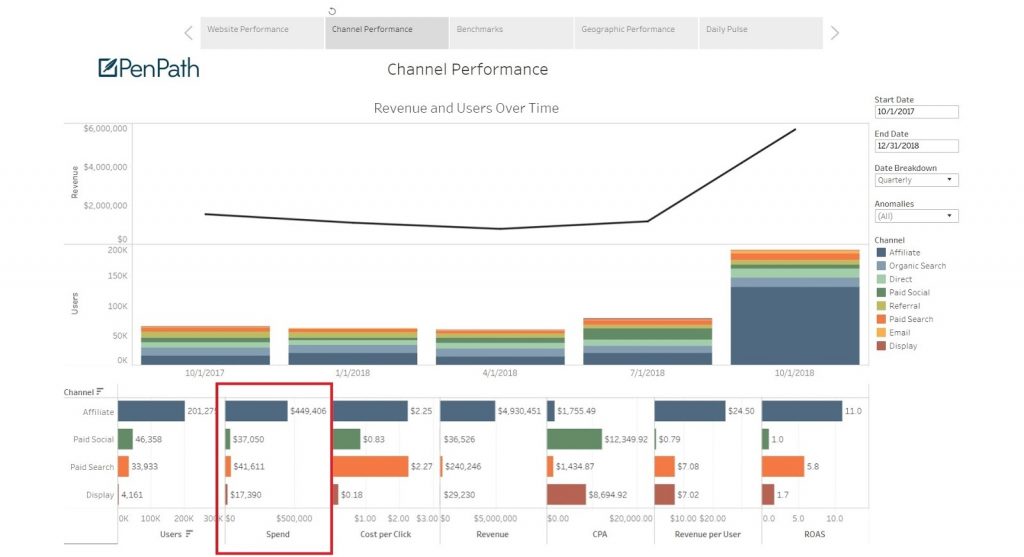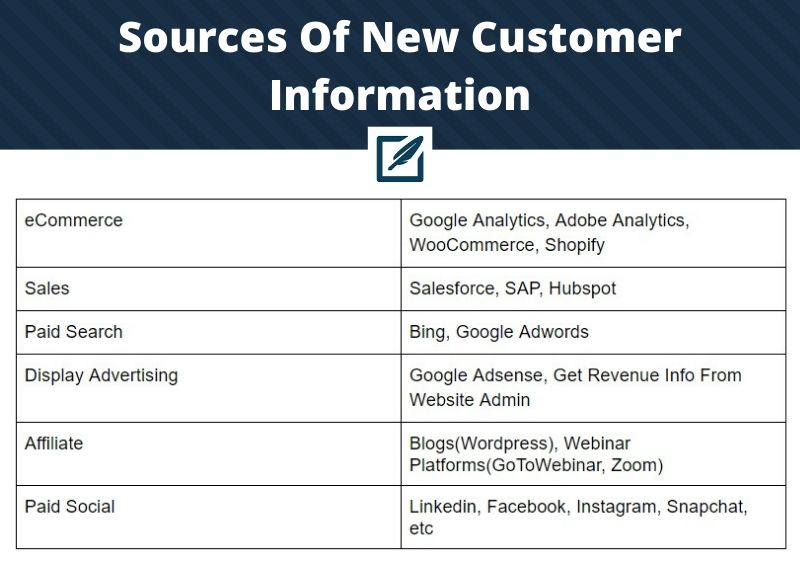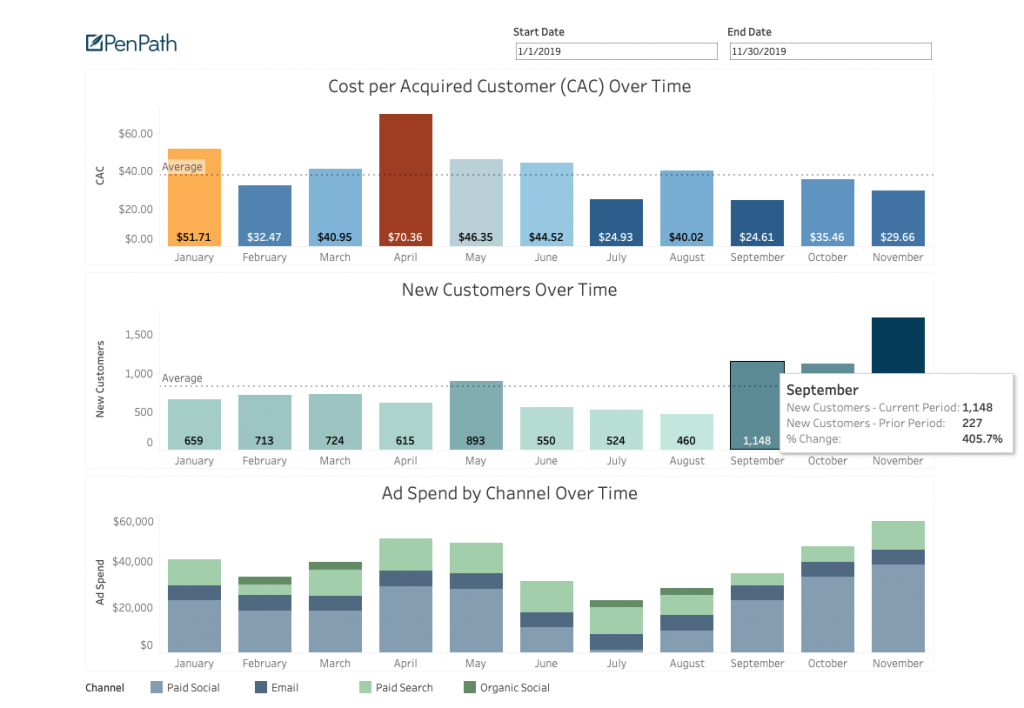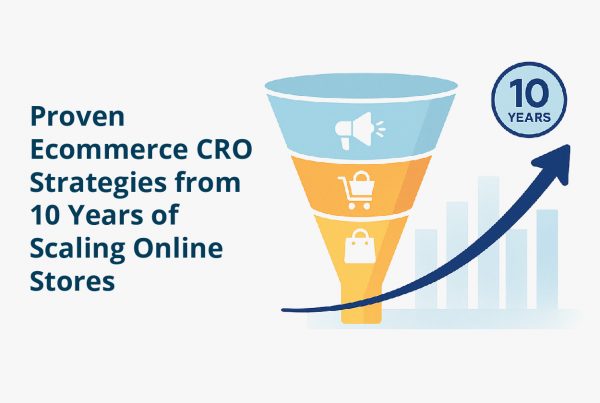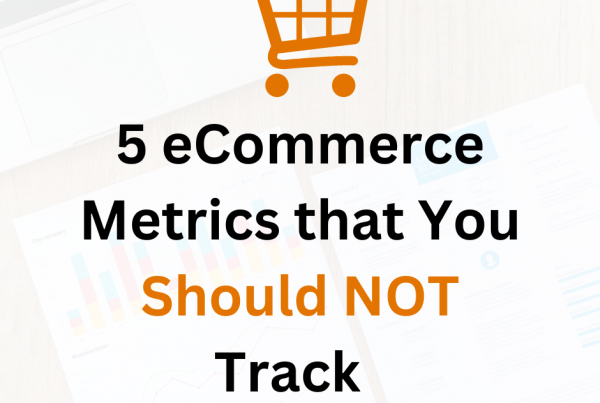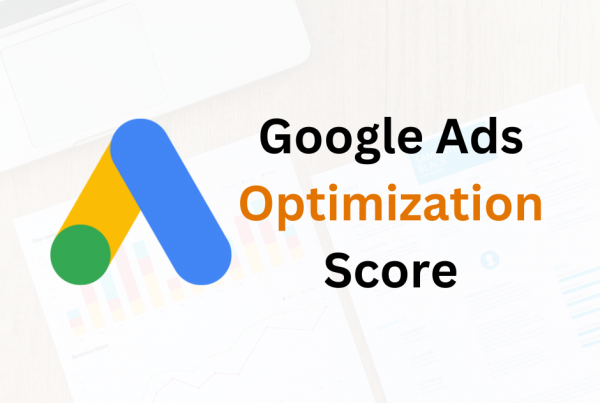Welcome to our Measuring Metrics That Matter Series! Today we’ll be discussing CAC (Customer Acquisition Cost) and its components.
In our last article, we talked about where to find spend on various marketing platforms, and what that looks like aggregated.
Now we’re continuing with that and going deeper…
Table Of Contents
- Formulas
- Data Blending
- CAC Formula
- New Customer Data
- CAC Dashboard & Analysis
- Further Actions
1. Formulas
We’ve already explained some of the simple calculations a marketer can do when they have the “spend” metric.
For a quick review, they’re down below.
Formulas That Use “Spend” In Daily Marketing Use
- Profit= Revenue- Spend
- (CPC) Cost Per Conversion = Total Spend/ Number of Conversions
- (CPE) Cost Per Engagement = Total Spend/ Total Measured Engagements
- (CPM) Cost Per Thousand = (Total Spend/ Total Measured Impressions) * 1000
- Ad Rank = Max CPC * Quality Score (Google Adwords)
In terms of finding the total spend, we’ve said before that we would get that information from our various marketing platforms- Instagram, Facebook, Linkedin, Google Adwords, and Bing for example.
Then we can aggregate similar platforms’ cost and separate those into buckets such as “Paid Search” and “Paid Social”.
An example is shown below (in the live version it would be possible to see by date).
Source: PenPath Solutions
After you have it in neat buckets, there’s so many types of other data you can blend it with! If you need a refresher on what data blending is, here’s a quick guide as to why it’s so useful.
2. Data Blending
The beauty in data blending is that you can create new calculations based on metrics unique to you and your company. This is valuable stuff and can change your marketing strategy for the better.

Why would we want to do that?
Based on that information, we can see how our marketing strategy is doing as a whole. From there we can tailor it to our customers’ needs.
If our strategy is working, we can figure out how to do more. If not, we can see from new data where the bottleneck is.
“The beauty in data blending is that you can create new calculations based on metrics unique to you and your company.”
In this article, we’re going to grab metrics from different data sources and blend them to calculate CAC. This is the new calculation we are creating using blended data.
Let’s learn more about it!
3. CAC Formula
The CAC formula, like the ones shown above, is an important marketing formula. It also uses spend as a component.
CAC= [Spend]/[New Customers]
What does it mean?
It tells us the cost to acquire a new customer.
The beauty of using this formula in a dashboard is that we can get a quick snapshot of CAC across all of our advertising channels or wherever we are using spend.
And we can get this information for the timeline we choose, whether it’s 1 month or 12 months, across all platforms. This instant data is what makes dashboards so powerful.

How would this work for CAC?
We’ve already talked about where to get spend from in the last article. Now let’s talk about which data sources we would use to pull our new customer information from.
4. New Customer Data
Our new customer data can be captured from a variety of sources. It depends on what type of company it is, what it sells and what types of software it uses.
Here’s a table of some potential sources.
These are just some of the types of sources you can use for new customer information. Other sources could be Traditional Marketing (Tradeshows & Conferences) as well as Email Marketing (Marketo, Eloqua).
The great part is that whether you’re selling products online, getting leads, or getting paid for a subscription revenue model, all of that is able to be tracked and analyzed.
Most importantly, conversion tracking needs to be enabled so that you as a marketer are able to see how your direct-response campaigns are doing.
This means that your tags need to be set up using tracking software, and that your UTMs are formulated the correct way to track the same campaign in multiple platforms.
If you need help, this is something PenPath can help you with.
Here are some other tips on how to make direct-response campaigns effective.
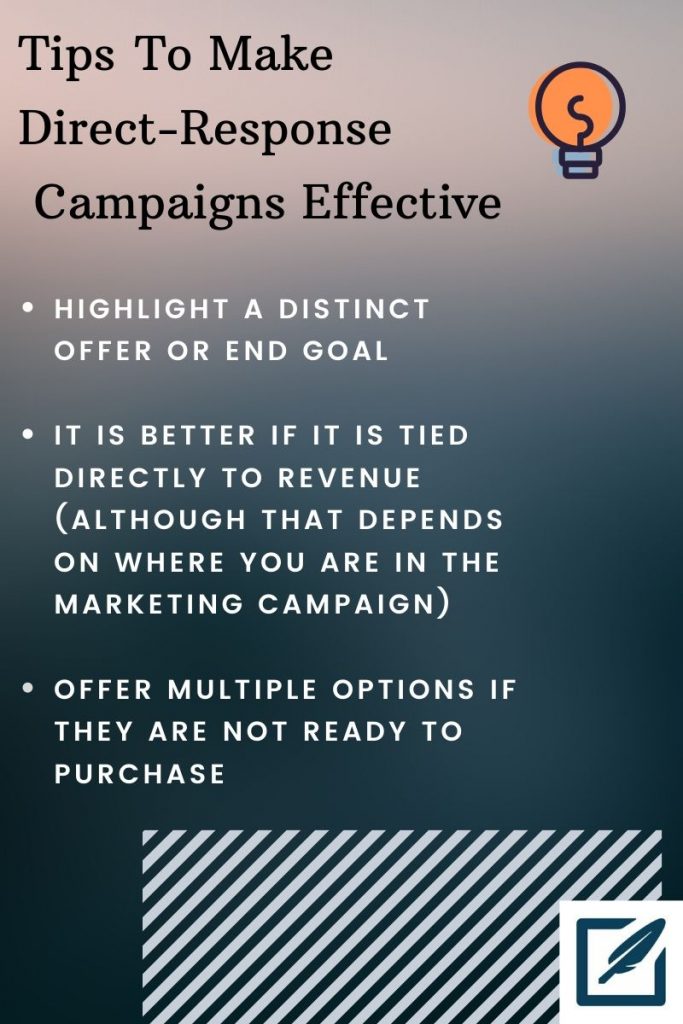 Source: Google
Source: Google
If you have everything set up correctly, it will only make sure that your dashboard data is clear and easy to understand.
Let’s go back to our CAC formula and see how it can be visualized in a PenPath dashboard.
5. CAC Dashboard and Analysis
The dashboard below uses the CAC formula mentioned above.
For this dashboard, we used a CRM to get new customer information. For most large businesses and B2B organizations this will be the case.
However, it doesn’t necessarily need to be from there. For smaller organizations and eCommerce companies, there are of course other sources.
Source: PenPath
When looking at a dashboard, it’s important to brainstorm some potential questions to ask. Here are some questions we would ask for this one:
- What month had the highest CAC vs. the lowest CAC?
- Are our new customers growing, decreasing, or staying the same over time?
- Which channel are we generally spending the most on?
- How about the least?
- Does that change from month-to-month or stay the same?
- What does this tell us about our strategy and if it’s working or not?
In the next section, we’ll see how this can be translated into an actual marketing strategy to get results.
6. Further Actions
The last question asked in the Dashboard & Analysis portion delved more into the action part of strategic marketing.
In other words, we’re going from asking questions about the dashboard to asking questions on how we can improve our strategy.
How will this dashboard translate into results?
Based on what it shows, marketers could focus on different types of strategies.
In terms of getting leads, we could focus on prospecting, or identifying other potential customers and demographics.
In terms of getting more from online advertising, we could focus on retargeting or remarketing to people who have responded well to our served ads, or spent more time on the site.
The marketing strategy will be unique to each company, based on the company’s needs.
Because a marketing strategy is custom for every business, it makes sense that its data and visualizations are as well.
“Because a marketing strategy is custom for every business, it makes sense that its data and visualizations are as well.”
After all, if you don’t have analysis that’s tailored to what metrics your company finds important, how can you create a solid marketing strategy?
(For more on creating a solid marketing strategy, our Part 1 and Part 2 series on the topic explains it well.)
This is why at PenPath, we help companies create dashboards unique to you.
As marketers and analysts, we have the know-how to be experts at the creative and analytical side of digital marketing.
A good dashboard can’t come from bad data, so we help you set that up first.
We also create custom calculations and dashboards for companies based on highly technical needs, as well as streamlining the many marketing platforms out there for a cohesive solution.
If any of this sounds interesting, contact us for a pressure-free demo. We’ll simply show you a live version of our dashboards (like the ones we showed above in the post).
Otherwise, keep reading our posts to understand how to stay at the forefront of marketing intelligence!

